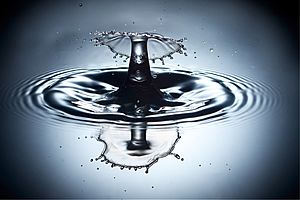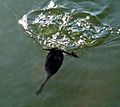Surface wave facts for kids
A surface wave is a special kind of wave that travels along the edge, or "interface," between two different things. Imagine the surface where water meets air, or where two different types of liquids touch. These waves move right along that boundary.
Contents
What Are Surface Waves?
Surface waves are a type of mechanical wave. This means they need something to travel through, like water or the ground. They are not like light waves, which can travel through empty space.
How They Form
Surface waves often form when two different materials meet. These materials usually have different densities, meaning one is heavier or more packed than the other. Think about how waves form on the ocean. That's a surface wave traveling between the water and the air!
Types of Surface Waves
There are a few main types of surface waves you might hear about:
Water Waves
The most common surface waves we see are on water. These are the waves you see at the beach or in a pond. They travel along the surface where the water meets the air.
Ground Waves
When we talk about radio waves, a special kind of surface wave is called a ground wave. These radio waves travel very close to the Earth's surface. They can follow the curve of the Earth, which helps radio signals travel long distances, especially for AM radio.
Other Surface Waves
Sometimes, surface waves can also be electromagnetic waves. These waves are guided by how a material bends light or other waves, which scientists call a refractive index gradient. This is a bit more complex, but it means the wave follows a path along a boundary where the material's properties change.
Where Do We See Surface Waves?
You can find surface waves all around you!
- Ocean waves: These are the most obvious examples. They carry energy across vast distances.
- Earthquakes: Some earthquake waves, called Love waves and Rayleigh waves, are also surface waves. They travel along the Earth's surface and cause a lot of the shaking we feel during an earthquake.
- Sound: In some special cases, sound waves can also travel as surface waves, like when sound travels along the surface of a solid material.
Images for kids
-
Diving grebe creates surface waves




